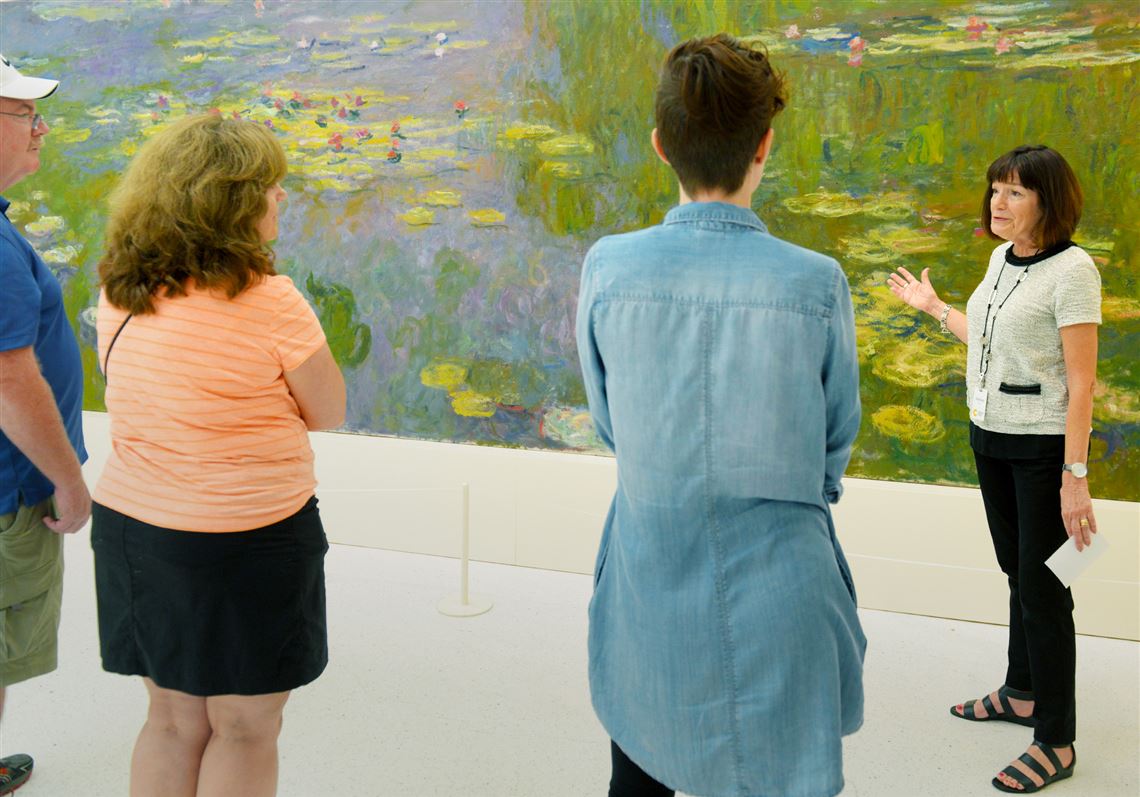Peace and serenity are in short supply right now, but that’s exactly the feeling you get when you see Claude Monet’s “Water Lilies.” Visitors to the Carnegie Museum of Art in Oakland may feel like they are strolling through the gardens of the late artist’s home in Giverny, France.
“Water Lilies,” also known by its French name “Nymphéas,” is believed to have been painted between 1915 and 1926 and is part of a series of more than 250 similar Impressionist works.
Monet began to develop cataracts as early as 1903 and was nearly blind by 1922. After surgery, his perception of color remained distorted. He saw everything with a yellow tint from one eye and a blue tint from the other. So he only painted with one eye at a time. He would read the labels on the tubes of paint to figure out what color they were.
The painting remained in Monet’s son’s studio until 1950, when he sold it to Walter P. Chrysler Jr., son of the founder of the American car manufacturer. Sarah Mellon Scaife paid $200,000 (equal to over $1 million today) for the huge painting and gave it to the Carnegie Museum of Art in 1962. It was the most valuable item in the museum's collection when it was purchased and the second Monet work in its permanent collection. The first was acquired in 1953 and two others in 1967 and ’73. Another of Monet’s water lilies paintings sold at a New York auction for $43 million in 2012.
Pittsburgers’ appreciation for Impressionism and for Monet, specifically, continued to grow throughout the latter half of the 20th century. A 1989 collaborative museum exhibition featured 85 paintings from Monet, Degas, Van Gogh and other Impressionists. During its two-month run at the Carnegie, more than 50,000 people came to see the show. For the first time in its history, the museum required advanced ticketing because of the large turnout.
The exhibition included three water lily paintings, two of which were meant to be displayed together. All three were hung together for the 1989 show. Some researchers believe the artist intended that groups of these paintings be displayed in circular rooms, surrounding the viewer. Though this work, which hangs in the Scaife Galleries, doesn’t have others around it to create a panorama effect, it’s still easy to feel overwhelmed by the scale of it.
At 20 feet long and 7 feet high, “Water Lilies” is best viewed from a distance. The viewer’s eye is drawn to the most defined water lilies in the lightest part of the canvas on the center-left. The outlines of the surrounding lilies aren’t as clear. Green brush strokes in the top right quadrant suggest grass or cattails growing out of the water. The green shape on the left and bottom right suggest a tree reflected in the pond’s surface.
To really appreciate “Water Lilies,” you must see it in person. The colors don’t translate well to a digital format, especially the contrast between light and dark that create the illusion of sun and shade. Seeing it in the gallery allows its colors to glow in a way that the blue light of a computer screen can never capture.
Maggie Susa: msusa@post-gazette.com.
First Published: July 29, 2020, 2:08 a.m.















